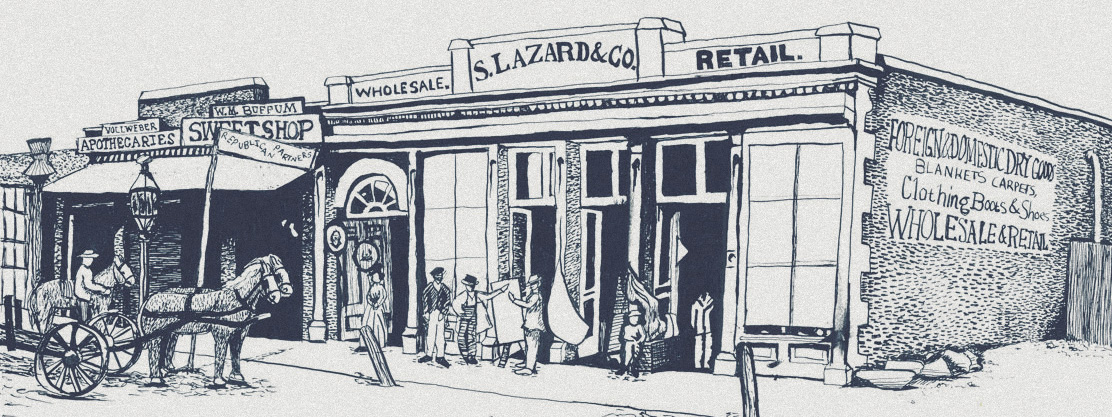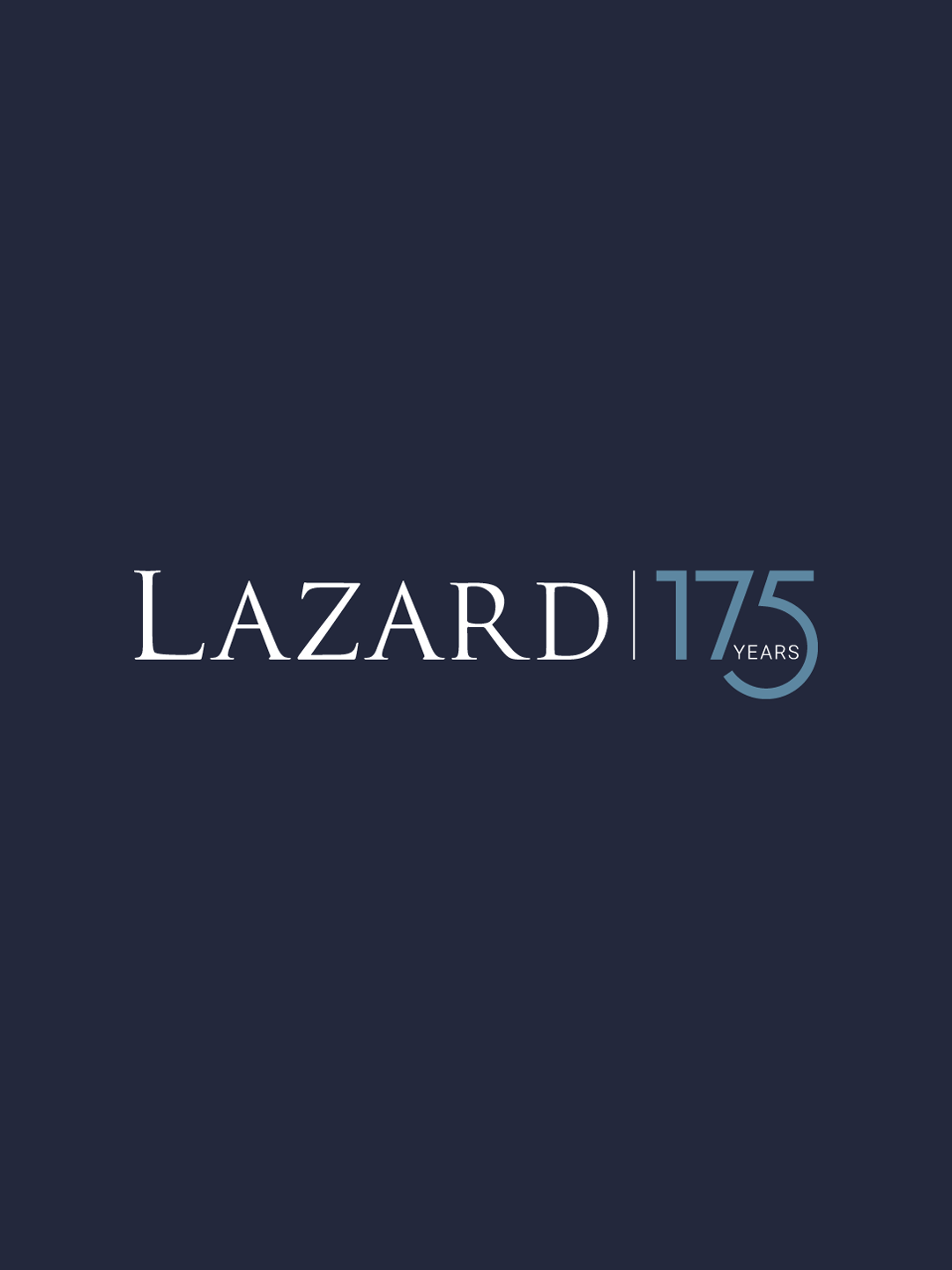History


Lazard’s story begins in the age of steamships and telegrams, with the emigration of five French brothers and several cousins to the United States. In 1848, Alexandre, Lazare and Simon Lazard founded Lazard Frères & Co. in New Orleans as a dry goods merchant.
By 1851, Lazard Frères had moved to San Francisco, where it would expand into banking and foreign exchange. In the same year, one of the brothers opened a New York office. In 1854, Lazard Frères opened an office in Paris. It soon began advising the French government on gold purchases, and in 1870, the family opened an office in London.
Immigrant Beginnings
1841
Alexandre and Lazare Lazard, two brothers from Frauenberg, France, arrive in New Orleans. They immediately set to work buying goods wholesale in the city and traversing the countryside selling items piecemeal to settlers and farmers. Within several years they achieve enough success to write home and invite a third brother, Simon, to join them.
1845
The three brothers open their first store on New Orleans' Frenchmen Street, a short walk from the city docks where the brothers could attend the daily unloading of cargo-laden clippers and steamships from around the world. The Lazard brothers specialize in "dry goods," a term for fabrics, clothing accessories, haberdashery, and related items.
1848
Alexandre, Lazare and Simon Lazard decide to give their partnership a legal framework, drawing up a contract that marks the founding of Lazard Frères & Co. They are soon joined by their two younger brothers, Elie and Maurice, as well as several cousins.
1851
When news spreads of spectacular gold discoveries in California, the Lazard brothers decide to seize the opportunity. Simon, Elie and Maurice move to San Francisco to open a new store to serve the booming local economy. Alexandre Lazard moves to New York City where he can oversee Lazard's supply chain. Lazare, the eldest brother, retires from the firm.
1854
Alexandre Lazard returns to France and opens a Lazard office in Paris, overseeing the export of fine French fashion to meet growing demand in San Francisco. He is followed by Simon.
1860s
Lazard Frères transitions out of retail and into banking. The company has a substantial clientele of French émigrés, and with gold the common currency, Lazard begins helping them ship the precious metal safely to their families in France. This evolves into the handling of commercial drafts and currency exchange. The growing business expands its lending services, even offering mortgage loans.
A Business Based on Relationships
In the late 1800s and early 1900s, the firm evolved into three 'Houses of Lazard' in the United States, France, and the United Kingdom, separately managed but allied. The Lazard partners advised clients on financial matters and enhanced their cross-border network of relationships in business and government.
1870
Paris comes under siege in the Franco-Prussian War and Alexandre Lazard opens a temporary London office to ensure uninterrupted client service. Simon Lazard stays in Paris, despite dire wartime conditions.
1876
After years of careful planning, Lazard liquidates the last of its dry goods inventory and becomes a chartered bank, establishing a head office in Paris and a branch in San Francisco.
1877
Lazard Frères opens a banking branch in the City of London at 60 Old Broad Street. The firm begins
to establish correspondent offices around the world, including Asia.
1880
Lacking a presence on Wall Street, Alexandre Lazard leaves San Francisco, his home for the past 30 years, to open a branch in New York City. Arriving with almost no local relationships, Alexandre leverages the family's retail contacts to build a banking business with a small but quality clientele, discounting their bills and financing their growth.
1884
Lazard gradually becomes one of the United States’ leading exporters of gold, and one of its leading currency exchange houses, helping the firm gain entry to the inner circles of New York’s banking syndicates. In an era where steamships take weeks, if not months, to deliver the precious metal across the Atlantic Ocean — putting the firm’s capital out of reach and at risk — Lazard needs additional capital to continue growing.
The firm’s partners create the London, Paris and American Bank Ltd. (LOPA), raising funds primarily in San Francisco, where Lazard continues to have its biggest network of relationships. The bank operates with a London charter in order to take advantage of a lower cost of capital in Britain and the opportunity to leverage Britain’s commercial ties to Asia.
A Culture of Accomplishment
Some of the greatest names in 20th century finance established and enhanced Lazard's reputation in the economic recovery following World War II.
They include André Meyer, widely regarded as a genius of investment banking; Michel David-Weill, who oversaw the firm's transformation into a mergers and acquisitions powerhouse; and Felix Rohatyn, whose many accomplishments include his pivotal role in saving New York City from bankruptcy in 1975.
In the latter part of the century, Lazard expanded into new markets around the world, becoming a global force in financial advisory and asset management. As the firm grew, Lazard fostered a unique culture that encourages individual initiative and discourages bureaucracy.
1906
The San Francisco earthquake destroys the local Lazard office, but customer assets are preserved. The firm plays an active role in the city’s rebirth. David Weill takes over Lazard Frères as senior partner following the death of his father, Alexandre Weill.
1914
With the coming of the First World War, Lazard’s Paris office becomes short-staffed as its partners join the military, but it continues operations on behalf of the French government, assisting with financing needs for the war effort. Across the English Channel, Lazard's London office aids the British government in its own financing. With Europe subsumed by war, Lazard’s U.S. banking operations continue to grow in size and stature.
1919
Bowing to nationalist sentiment in the U.K. after World War I, the Lazard partners seek to strengthen local ownership of Lazard Brothers, the London house. They sell a minority stake to Weetman Pearson, a wealthy industrialist and prominent client of the firm.
1924
Following World War I, France suffers from spiraling debt and a limping economy. International currency speculators began to sell the franc. By 1924, the franc’s value is collapsing and France’s economy is in jeopardy. A counter-offensive to save the franc is conceived by Frank Altschul, Director of Lazard New York. The strategy is to coordinate with the Banque de France, London’s City banks, and the major U.S. banks to sell massive amounts of the world’s major currencies while buying the franc. For 12 days in March, the “battle of the franc” rages. In the end, with the franc stabilized, the short sellers are routed and many prominent speculators are driven into bankruptcy.
1931
Fraud is discovered in Lazard Brothers’ Brussels office. The financial impact is enormous and threatens to bankrupt Lazard’s partners. The Bank of England helps arrange a loan from Weetman Pearson, which will bail out Lazard Brothers, and Pearson becomes 80% owner of the London house. His stake will eventually transfer to the family business that becomes Pearson plc.
1933
Following the Glass-Steagall Act, Lazard in the U.S. ceases commercial banking activity and becomes an investment bank. For the next 10 years, the U.S. house will expand its retail brokerage operations,
following the model of most U.S. investment banks at the time.
1944
Pierre David-Weill, son of David, becomes senior partner based in Paris; André Meyer becomes head
of Lazard’s U.S. operations. André Meyer shuts down the American retail brokerage operations.
1953
Lazard begins asset management operations in London.
1969
Lazard Paris begins an asset management business.
1970
Lazard Asset Management is established in New York and registered with the SEC.
1975
Lazard Senior Partner Felix Rohatyn is approached by the Governor of New York State with a seemingly impossible task: to save New York City from imminent bankruptcy, as head of the newly formed Municipal Assistance Corporation (MAC). Against all odds, Felix oversees successful negotiations to rescue the city and becomes a local hero. He remains MAC Chairman for 20 years. All the while, he keeps his partnership at Lazard, where his advice was eagerly sought by corporate chieftains.
Michel David-Weill, great-grandson of Alexandre Weill, is named Senior Partner of Lazard’s Paris partnership.
1981
France’s Socialist government begins a program of nationalizing the country’s banks. After intense negotiations that go down to the wire, Lazard successfully makes its case that the firm’s status as an advisory firm and its multi-national character should exempt it from the government’s program.
1984
A new entity is formed, Lazard Partners, with control of the three houses headquartered in London, Paris and New York. Pearson’s longtime stake in the London house is replaced with a 50% stake in
Lazard Partners.
1995
Lazard Frères Gestion is established in Paris, paving the way for ambitious growth in asset management and private banking in France.
1997
The U.K. and U.S. asset management activities are integrated, forming a single asset management entity to provide a more globally integrated perspective.
Evolving with Clients
In 2000, after more than 150 years of separate management, the Houses of Lazard formally united into a single entity to best serve our clients.
In 2005, under the leadership of Bruce Wasserstein, Lazard became a public company. Since October 2023, Peter R. Orszag has led the firm.
Lazard's history is engrained in its culture. To this day, Lazard operates as a local firm in local markets, but serves clients with multinational resources and global perspective.
2000
Following the sale by Pearson of its Lazard holdings, the three Houses of Lazard are formally reunited as Lazard LLC.
2002
Bruce Wasserstein is named Head of Lazard LLC and begins a significant expansion of the firm’s global office network.
2005
Lazard ends 157 years of private ownership and becomes a public firm with well-established offices around the world.
2008
The Global Financial Crisis begins. Lazard plays a vital role in shoring up and restructuring major financial institutions, including the winding down of Lehman Brothers, the largest bankruptcy in U.S. history.
2009
Kenneth M. Jacobs is named Chairman and CEO of Lazard, following the sudden death of Bruce Wasserstein.
2012
Lazard’s Sovereign Advisory team successfully negotiates an agreement to restructure Greek debt, heading off the potentially disastrous outcome of Greece falling out of the euro currency zone.
2013
Lazard builds on its corporate takeover defense capabilities to create a Shareholder Advisory business group to help public companies manage the growing influence of vocal shareholders.
2021
Lazard achieves record annual operating revenue of $3.1 billion, based on strong results globally in both Financial Advisory and Asset Management.
2023
Lazard celebrates its 175th anniversary. Peter R. Orszag is named CEO of Lazard.
Celebrating 175 Years of Lazard
Take a journey through the past 175 years to learn how a small New Orleans dry goods business founded by two French brothers became one of the world's leading financial institutions.
Click here to watch our retrospective film about the rich history of Lazard and to read the special commemorative digital book we have published to celebrate this landmark occasion.



